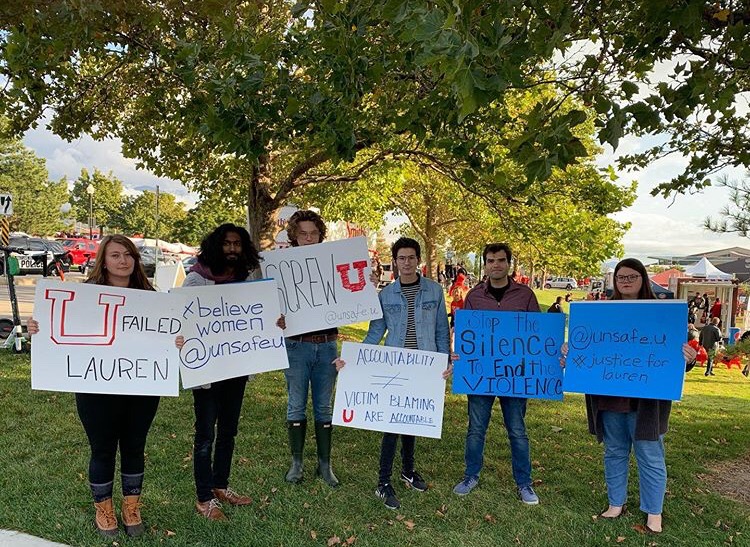Barron: A SafeU Depends on You
May 14, 2020
My decision to attend the University of Utah was deliberate. The year I graduated high school, the Salt Lake Tribune was investigating sexual assaults on Utah campuses. Headlines focused on how charges were never filed against a USU football player despite four allegations of rape and how BYU’s Honor Code Office punished students who reported rape. Because 1 in 4 undergraduate women are sexually assaulted, believing that victims could find advocates in their school administrators and law enforcement officers was important to me. Not only was the U’s engineering program excellent, but the absence of explosive investigations led me to believe student safety was a part of the campus culture.
Now, as a college senior, I’m more skeptical about the so-called “SafeU.” Since Lauren McCluskey’s murder, investigations have discovered a culture of sexism within the campus police department that devalued female victims’ who reported assault, and University of Utah administrators have made it clear they believe there is no “requirement that a University protect[s] its students from sexual harassment.” These revelations have been disheartening for every student at the U, but may be paralyzing for incoming students who are caught between their desire for an excellent education and worries about their personal safety. While these concerns remain valid, current students have taken action to meaningfully change campus culture to protect incoming and future students.
UnsafeU, a student organization dedicated to raising awareness about safety issues at the U, is known for not pulling any punches. Their Declaration of Protest begins, “After enduring harassment, assault, abuse, and even becoming victims of murder, we … have watched as our campus leadership has continually failed to take accountability … It is with our deepest frustration that we, proud students of the University of Utah, do resort to protest.” This declaration goes on to detail student demands which encourage university accountability and transparency along with increasing student access to safety resources. Less than a year later, these students’ advocacy has had tangible results. Not only have some of UnsafeU’s demands been implemented by the Watkins administration, including hiring a Chief Safety Officer, but the protests organized by the group continue to apply pressure on the administration by keeping the conversation about student safety alive on campus.
Last fall, the U filed a motion to dismiss a lawsuit filed by McCluskey’s parents asserting her safety was not the U’s responsibility. In response to this court document, the ASUU Assembly, a branch of the U’s student government organization, voted in support of a resolution rebuking the Watkins Administration. This was the first time ASUU had ever made a formal critique of University leadership, but student representatives say it was necessary as “students are angry.” This resolution elevated student concerns about university accountability, cementing ASUU’s role of amplifying student voices despite objections from the university’s administration. Over the rest of the 2019-2020 school year, ASUU reacted to student outrage by voting down a bill that would have expanded police presence on campus and by worked with the Counseling Center and the Center for Student Wellness to increase student access to care. Luckily, advocacy for campus safety will not end with the school year as it was central to the incoming ASUU presidency’s platform.
While the Watkins administration’s SafeU initiative is little more than a PR campaign, student advocacy has led to meaningful University action. Based on student recommendations, the U implemented a SafeRide program to provide students and faculty with a safe way to get around campus at night. While SafeRide isn’t perfect, the program’s manager, Chad Larsen, has been open to working with students to increase the service’s functionality. The U also received a grant which will fund campus improvements advocated for by UnsafeU, including additional training for campus police officers and a new part-time victims’ advocate. More programs, services and resources needed to improve student safety will likely come if students continue to push for the campus culture they deserve.
The U’s student body has a history of advocating for student safety over the objections of university administrators, a history of which I am proud to be a part. As the U has not yet achieved a culture of accountability and safety, incoming students are critical in continuing this tradition of leadership. Without students showing up to protests, participating in walk-outs and signing petitions, UnsafeU’s demands would likely have been ignored by the administration. Additionally, ASUU would not have known the magnitude of student anger surrounding the U’s failure to keep students safe and accept responsibility for their well-being. Every incoming student should be aware of safety concerns on campus and decide what they will do to address these issues. Last year alone, we saw that students have the power to enact meaningful change on campus by attending safety forums and student-led protests, voting for responsive ASUU representatives, or even deciding to run or apply for an ASUU or UnsafeU position themselves.








